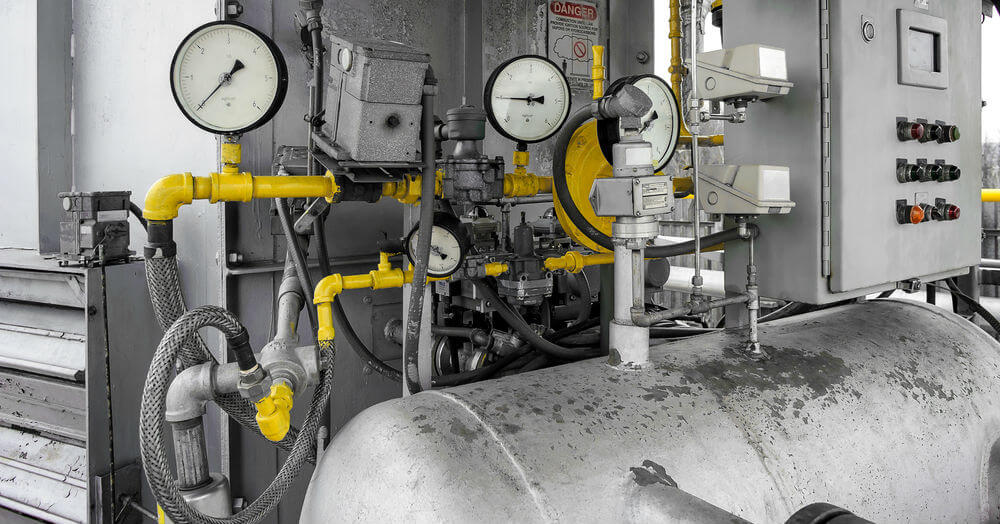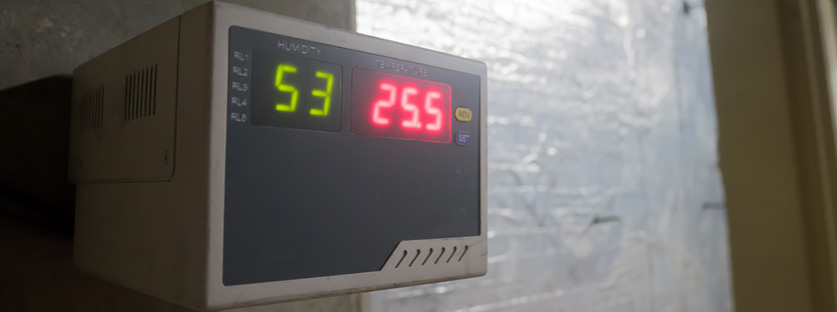Compressed Air Testing: Why and How to Test Industrial Air and Gas
May 12, 2020
In today’s highly industrialized society, countless processes require the use of compressed air. Industries including Oil & Gas, Petrochemical, Industrial, Environmental, Medical, Food & Beverage, Pharmaceutical, and Airline incorporate compressed air systems in their manufacturing cycles. Since compressed air is critical to these processes, it’s important for plant operators using these systems to properly monitor the quality of the compressed air in their processes.
Compressed air quality testing ensures that the air supplied to industrial processes are free of impurities that might damage equipment or alter the quality of finished products. This article will highlight how standard compressed air testing is done and why it is relevant to industrial operators.

What Is Compressed Air Testing?
A compressed air test is a standardized procedure used to ascertain the quality of the produced air. Compressed air testing determines that the compressed air being supplied to industrial processes is free of impurities. The contaminants routinely tested for are water, suspended particles, and oil residue generated from three major sources:
- Contamination from ambient air drawn into the compression system
- Impurities introduced from compressor parts and lubrication oils
- Inbuilt contaminants from piping and storage components of air compressors
Why Is Compressed Air Quality Testing Important?
Compressed air is used in critical industrial processes where manufacturers strive to produce high-quality products. Considering the damage impurities can cause to equipment and final products in sensitive manufacturing processes, proper compressed air testing guidelines must be adhered to during all process cycles requiring compressed air usage.
Because the compressed air dew point temperature rises with increased pressure, compressed air systems frequently cause the creation of water within air systems.
What Is ISO 8573 Compressed Air Quality Standard?
The ISO 8537 compressed air standard is an internationally recognized system that applies to the purity of compressed air in an industrial setting. This testing protocol is both an efficient and cost-effective method of determining the level of impurity present in a pressurized gas sample.
Compressed air ISO 8573 testing schedules for particulate contaminants, water, and oil, are currently being implemented in countries across the globe including the US, Germany, and the United Kingdom.
Compressed Air Testing Procedure for Water, Oil, and Particles
Depending on the type of contaminant involved, there are different methods and instruments used to measure the purity of compressed air. Operators must use the appropriate testing devices and methods if they are to guarantee the quality of the compressed air being supplied to their manufacturing processes.
How to Test for Water in Compressed Air
A key step in determining compressed air purity requires the assessment of the water vapor content of the produced air. If the moisture content of compressed air turns out to be too high after testing, desiccant dryers and membrane air dryers can be applied to the process.
Three major testing techniques assess the water saturation levels of compressed air.
- Hygrometers
- Spectroscopic analysis
- Detection tubes
Hygrometers

ISO 8573 compliant hygrometers come in many sizes depending on the different operator specifications. Regardless of the manufacturer or type, all standard hygrometers must possess the following features:
- Ease of calibration to suit industrial environment settings
- Adaptability to sampling compressed air from different sources and entry pressures
- A high degree of accuracy and precision
The use of properly calibrated hygrometers will help operators assess compressed air samples for water vapor in line with standard ISO 8573 requirements.
Standard hygrometers include columns filled with special moisture-sensitive materials. These devices use chemical reactions that manifest as a color change, indicating that the water content of a stream of a compressed air sample has exceeded a pre-determined level.
How to Test for Oil in Compressed Air
Testing air samples for oil residue detects the presence of undesirable hydrocarbons that might alter the results of sensitive industrial processes. Among the major oil impurities detected by standardized compressed air testing techniques are condensed and total hydrocarbons as well as oil vapor. These impurities usually originate from external sources such as lubrication used in compressor units and detected levels are measured in parts per million.
Aerosolized Oil Testing
Specialized membranes can be used to effectively test compressed air samples for oil aerosols. These highly efficient membranes will capture oil residue for further analysis by infrared spectrometry and are recommended in settings where high levels of oil contamination are anticipated.
Compressed Air Sampling for Oil Vapor
This method of testing for oil employs gas chromatography to analyze compressed air samples for hydrocarbons containing at least six carbon atoms in their structure. A sampling probe introduced into a stream of compressed air will accurately test for impurities in the range of 0.001 mg/m3 to 10mg/m3.
How to Test for Particles in Compressed Air
Testing compressed air for particles can be achieved using one of these methods:
- Microscopic filter collection
- Laser particle counter
Microscopic Filter Collection
This method uses an optical microscope to assay air samples for particulate impurities. It uses a gridded membrane to capture small particles but is not sensitive enough to detect particles smaller than 0.1 microns.
Laser Particle Counter
The use of a laser particle counter is a more efficient way to assay compressed air for particles. This automated device provides data on air samples for particles of all sizes via a convenient printable readout for short processing time.
GENERON® Process Equipment Can Improve Efficiency
At GENERON, we are committed to providing our customers with turnkey or custom solutions for their compressed air processes. Our services focus on helping our clients cost-effectively realize maximum industrial productivity.
Contact us online today for a quote or to learn more about how our process equipment can improve your industrial process.
